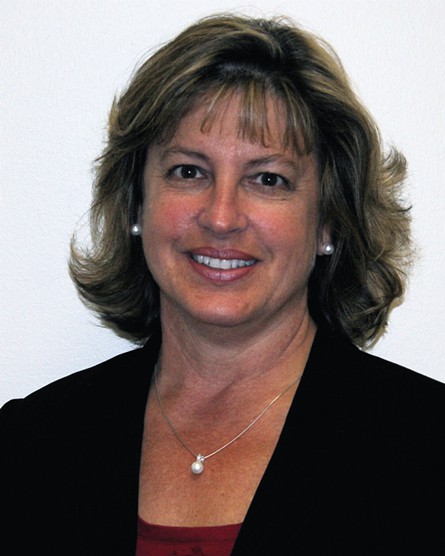CR’s Humanities building, one of several new structures on the Eureka main campus.
Note: This is the second of five parts in the LoCO’s weeklong series on College of the Redwoods and its recovery from accreditation trouble. Read yesterday’s installment here. Today’s installment examines CR’s money trouble.
When College of the Redwoods President/Superintendent Kathryn Smith sat down with some assembled financial experts for a close look at the school’s books back in 2012, they weren’t sure what they’d find.
“We knew something was wrong but didn’t know exactly what it was,” Smith said. After a couple of months, they found it: nearly $800,000 in bad debts that had been lurking in the books for years. These debts mostly stemmed from unpaid student fees — dorm residents and out-of-state students, for example, who’d racked up hundreds or thousands of dollars in bills that had never been collected.
Why not? In part because those fees are a pittance compared to the main funding sources for community colleges like CR, Smith said. The fees students pay per unit (currently $46 at CR) are pennies next to state apportionment money (currently $4,600 per full-time student). So College of the Redwoods, along with other community colleges in California, according to Smith, made a practice of being lenient to the point of ignoring these overdue student fees. Further obscuring matters, former president Jeff Marsee had hired additional top-level administrators and reshuffled responsibilities. The debts got lost in the mix.

CR has since written off that bad debt, turning it over to a collections agency — the first time the school had done such a thing. The college was left with a fund balance of 2.9 percent, meaning CR had less than 3 percent of its annual expenditures sitting in its reserve account. The state requires a reserve fund balance of at least 5 percent.
Meanwhile, student enrollment had dropped significantly. A number of factors contributed to this decline, including the lousy economy and changing demographics of the area, but the accreditation woes certainly didn’t help.
“We had news crews out here interviewing our students,” Smith recalled. “They [the students] were saying, ‘I don’t even know if my credits will transfer; I’m wasting my time here.’” The school was still accredited, of course — CR has never lost its accreditation — but school officials couldn’t seem to get that message to every student and potential student. “We tried, but they were still afraid. And so they quit coming,” Smith said.
The money troubles weren’t limited to old debt and student retention. Marsee’s presidency was marked by, among other things, his expansionist vision. Under his leadership, CR new instructional sites in McKinleyville, Arcata and Garberville and an expanded site in Eureka — all this at a time when state funding for community colleges was shrinking. This rapid growth contributed to the depletion of CR’s financial reserves. In Jan. 2012, hoping to stanch some of the bleeding, CR’s Board of Trustees voted to close the Arcata and McKinleyville sites.
Still more cuts were necessary. In Dec. 2012 CR announced that it was eliminating 39 positions. While many of those positions were vacant at the time, 16 people were laid off, including a gardener and an office worker at the Fort Bragg site, where people felt bitter and overlooked. More on that later in this series.
The Board of Trustees took further action, voting to voluntarily eliminate their $240-per-month stipends and contribute $300 per month to their health benefits. (The board has also been reduced in size from nine members to seven.) Eventually, most everyone on the campus payroll took one for the team: Classified staff accepted a 6 percent pay cut; the faculty union took an 8.7 percent cut; managers took a 8.83 percent drop; and administrators accepted a 9 percent salary reduction.
Those cuts will remain in effect until CR’s reserve fund balance goes back above 6 percent of annual expenditures and the state’s per-student funding gets increased, Smith said.
Tomorrow we’ll take a look at how the CR community came to together to address the shortcomings that had been identified by the accrediting commission.
PREVIOUSLY:

CLICK TO MANAGE